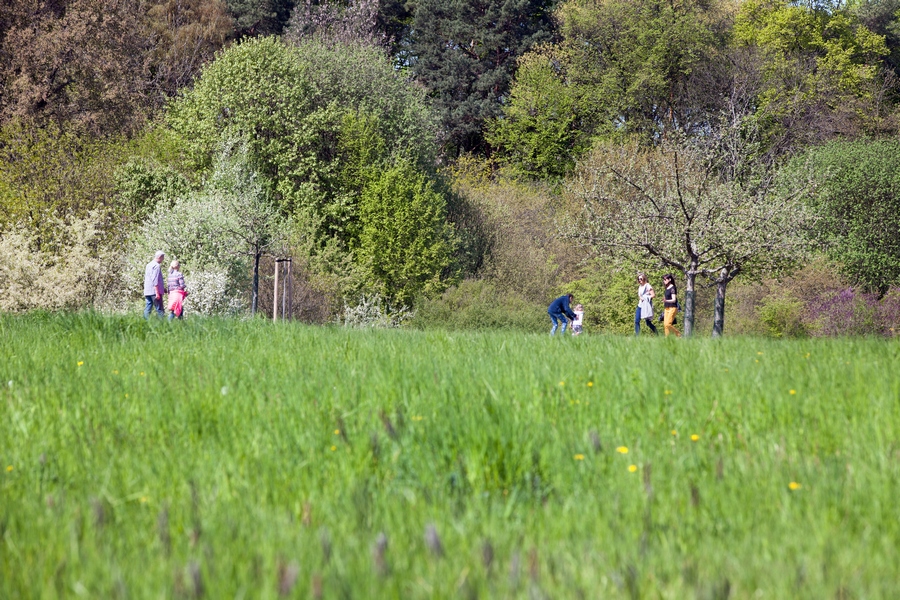Federal Ministry for the Environment presented draft bill
At the end of September 2020, the Federal Ministry for the Environment presented the draft bill for a law to protect insect diversity in Germany, the Insect Protection Act for short. The law serves to implement the "Insect Protection Action Programme - Working Together Effectively to Combat Insect Extinction", which was adopted by the Federal Cabinet last year. As a so-called article law, individual passages of the Federal Nature Conservation Act are to be amended or supplemented in a targeted manner.
The bdla welcomes the proposed legislation in principle, in particular the planned regulations to curb light pollution. Accordingly, in the case of both new construction and conversion projects, lighting must be installed and operated in such a way that animals and plants are protected from avoidable light emissions. The planned addition of "species-rich mesophilic grassland, scattered orchards, stone walls and dry stone walls" to legally protected biotopes in accordance with § 30 (2) BNatSchG is also supported. The future requirement in § 11 BNatSchG to review landscape plans every ten years to see whether they need to be updated is also welcomed.

The bdla vehemently opposes the proposed new regulation in § 11 para. 7 BNatschG, according to which green space plans can also be referred to as landscape management plans or open space design plans. The proposal is superfluous from a legal point of view and misleading, inadequate and counterproductive from a technical perspective. Instead of equating the two, a very clear distinction should be made between a green space management plan associated with the development plan, on the one hand, and an open space design plan associated with the building site, on the other hand, often referred to as an open space design plan, which essentially includes the design and amenities of the open spaces of developed properties.
Instead, the federal government should take the opportunity to standardize the open space design plan as a mandatory planning tool nationwide. The open space design plan implements or develops the goals of the green space plan. In this way, the open space design plan, in conjunction with the green space plan, consistently operationalises the "promise of qualified double internal development" and is a prerequisite for the concrete realisation of high-quality urban green space and insect protection in the urban and peri-urban cultural landscape. In progressive municipalities, this instrument is establishing itself as an important tool for construction projects in urban areas, e.g. the open space design plan is an obligatory part of the building application according to the municipal statutes of the state capital Munich.
Furthermore, the bdla proposes to include the environmental construction supervision as an instrument for an early environmental supervision of construction projects across all trades and protected goods in the Federal Nature Conservation Act. Environmental construction monitoring ensures that nature conservation concerns are taken into account during the implementation of a construction project and that environmental damage is avoided. The instrument also ensures that the provisions on insect protection, among other things, are implemented appropriately in practice.

Unfortunately, the draft law fails to specify rules for good professional practice in agriculture, forestry and fisheries in order to ensure improvements in these core areas of insect protection. Without clearly defined requirements in the Federal Nature Conservation Act, e.g. on site-adapted uses, the renunciation of grassland conversion or the balanced ratio of animal husbandry to crop cultivation, the ineffectiveness of Section 5 of the Federal Nature Conservation Act, which has been established for decades, remains. Here, qualitative and quantitative minimum requirements would be desirable, for example with regard to the biotope network and biotope connectivity, or land management in accordance with the principles of organic farming.
The draft law lacks binding statements on the voluntary commitment of the federal government, which could act as a role model for insect protection on its own land, in construction projects, and for federal authorities and institutions. For example, a renunciation of the use of pesticides, requirements for near-natural forest management on federal forest areas or requirements and measures to increase biodiversity in the greenery accompanying federally owned roads, waterways and railway lines are to be considered.
Bund Deutscher Landschaftsarchitekten bdla
Wilhelmine-Gemberg-Weg 6, 10179 Berlin
Tel. 030 27 87 15-0, Fax 030 27 87 15-55
- Latitude: 0
- Longitude: 0


